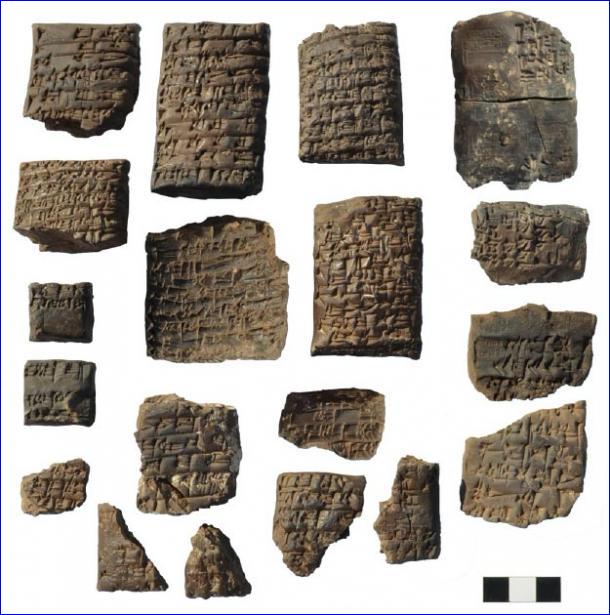


 Universita di Pisa)
Universita di Pisa)
The treasure trove of tablets and other fascinating and revealing items was found by a team from the Italian Universities of Pisa and Siena who worked with specialists from the Iraqi University of Al-Qadisiyyah. They had been digging at the Tell as-Sadoum site which is in south-central Iraq. According to Unipi News , "The 50-hectare site, east of Najaf, on a branch of the Euphrates River has been identified as Marad".
This was an important city, that was established in the 3 rd millennium BC and was once part of the Akkadian Empire . It was located on a hill and it was inhabited until the Neo-Babylonian period in the 1 st millennium BC. Excavations have revealed a large temple, some residential districts and a large manufacturing center.
3000-year-old clay cuneiform tablets
The team found the clay tablets in the manufacturing district, along with a large number of ceramic and pottery fragments. Archaeology News Network reports that "the archaeologists found a hundred or so fragments with cuneiform script". They are believed to date to the 2nd millennium BC. This means that they belong to the period of the Paleo-Babylonian Empire (the time of Hammurabi) reports LBV. Eight of the tablets have been found intact or only have relatively minor damage and all are inscribed with cuneiform, one of the earliest systems of writing.
The texts are related to a diverse range of activities that were happening in the ancient city. A number of the clay texts appear to be letters and other official documents. Some are on the subject of business and a sales contract and a purchase agreement have been found. There are others of a bureaucratic nature and some are even concerned with legal disputes.
Archaeology News Network quotes Prof. Anacleto D'Agostino of the University of Pisa, who took part in the dig, as saying, "the tablets bear witness to the wealth and the lively economic and administrative life of the ancient city in Mesopotamia". A few of the tablets also list the names of some kings and other cities. These could potentially provide insights into the political history of the Mesopotamian city.
Clay 'envelopes'
The archaeologists also found with the texts many fragments of clay containers or covers. These have been likened to envelopes in which the cuneiform tablets were kept. Three of these 'envelopes' have been found nearly intact. Many of these, which are made of thin strips of clay, have the subject of the tablets they contained written on them. They also often bear the imprint of seals, known as 'cretulae' with names and images, which were designed to authenticate the contents of the texts, inside the clay covering.

 Universita di Pisa)
Universita di Pisa)
Some 'ninety cretulae, or rather blocks of clay with seal or string impressions which were used to secure the containers' were also found according to the Archaeology News Network . Some of the seals were decorated with semi-precious stones. These were the personal marks of prominent people in the city, who were probably members of its administrative and commercial elite.
Artistic seals
The cretulae are beautifully engraved with 'various themes and are often executed with great care and expertise by skillful craftsmen' reports the Archaeology News Network . There are some with scenes of monarchs or possibly heroes fighting wild animals. There are also some Mesopotamian deities, mythological creatures and depictions of animals. These seals with their artistic designs demonstrate the sophistication of the culture in Marad.
The site at Tell as-Sadoum is believed to hold many more archaeological treasures. Unipi News reports D'Agostino, as stating that the expectation is "to continue the project through 2020 with a new mission in the field". The tablets will be studied further so that all their contents can be fully understood, and they will hopefully, reveal more about life in Ancient Mesopotamia.

or register to post a comment.